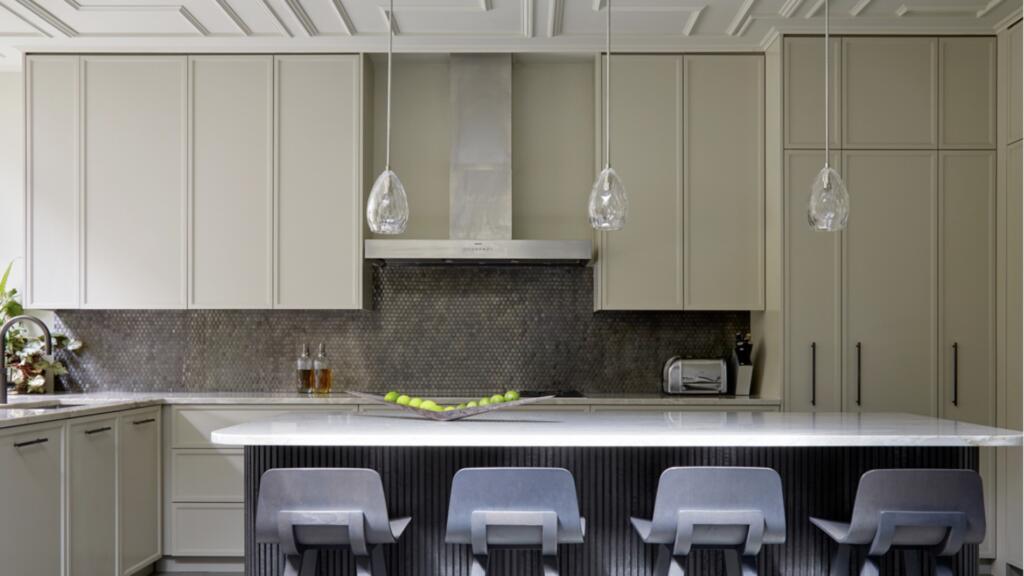
17 brilliant ideas to make your kitchen a happy place
Joy Archer
Wondering whether a conservatory just doesn’t cut it in the design stakes anymore? We let the experts settle the debate
Like us, you may remember the days of conservatory and double-glazing salesmen knocking on front doors to tout their wares.
Seduced by their promise of extra living space and a chance to soak up the sun, many homeowners bought into the dream and added a white uPVC structure to the rear of their homes.
Like us, you may remember the days of conservatory and double-glazing salesmen knocking on front doors to tout their wares.
Seduced by their promise of extra living space and a chance to soak up the sun, many homeowners bought into the dream and added a white uPVC structure to the rear of their homes.
 Credit: Thomas Sanderson
Credit: Thomas SandersonFast forward a few decades and it’s not uncommon to recall stories of how poor ventilation and lack of temperature control meant the conservatory dream was short-lived. For some it even became a nightmare.
Although production methods have since improved, changes in design trends and our own evolving tastes have resulted in us questioning whether conservatories are old-fashioned, or if there is still a place for them in home design.
The Oxford Language Dictionary defines a conservatory as a ‘room with a glass roof and walls, attached to a house at one side and used as a sun lounge or for growing delicate plants.’
It’s fair to say that an uber-contemporary glass box clearly falls into this definition but would not be considered to be old-fashioned. Neither would a luxury orangery or a Crittall-framed design.
But there are plenty of older designs that could be considered to be dated.
 Credit: Lemon and Lime Interiors/Jon Holmes Photography
Credit: Lemon and Lime Interiors/Jon Holmes PhotographyWe spoke to David Wilder, director of his own interior and furniture design company, and asked if he felt conservatories could still play a role in today’s homes. Having worked previously for luxury conservatory supplier Marston & Langinger, Wilder has seen the structures evolve over the years.
“Although conservatories certainly had a bad identity at one point,” says Wilder, “I think they’ve moved on. Whereas they were once seen as a transition space between the house and garden, they are now seen as an addition to the home.
“What’s key to making them work well,” he adds, “is to ensure the room has a clear identity. Don’t just use it as a separate living room, instead think of the space differently. If you approach the design creatively, with the natural abundance of light it can make a great office, library, or studio.”
 Credit: David Wilder Interior Design
Credit: David Wilder Interior Design“I also had a client who used a conservatory to link two areas of their home,” he adds. “It was a great way of adding extra space to a previously unused section of the property’s footprint.”
Nonetheless, even if conservatories have moved on in their design, Wilder feels there are certain interior design features that can date their look and should be avoided at all costs.
“Don’t use heavy items such as leather sofas and if you can, steer clear of wicker and bamboo – unless that is absolutely your style,” he advises.
“Always use blinds on the roof if you can, unless you live in the countryside and want to see the stars.
“Without blinds, the glass will simply act as a big black mirror reflecting the images of the people below. This can be a little disconcerting if you use your conservatory as an entertaining space.
 Credit: Thomas Sanderson
Credit: Thomas Sanderson“My personal favourites are pinoleum blinds,” he says. “They can still let the light in but provide ample cover at night.” Originating from France, pinoleum blinds are made from wood reeds and veneers that are woven into soft blinds. They are a great insulator, keeping a conservatory warm in winter and providing shade in summer. They allow dappled light to come through, so you’re never blinded by the sun during the day.
Whether you’re building a more formal orangery, opting for an aluminium structure or embracing contemporary style with a glass box, Wilder also has a few top tips when it comes to designing from scratch.
 Credit: David Wilder Interior Design
Credit: David Wilder Interior DesignBut what if you do have a white uPVC conservatory and now find it more cumbersome than contemporary? Jane Lee, interior stylist and property stager reminds us there are options.
“If you have the time and budget, it’s possible to paint white uPVC frames with specialist paint from the likes of Ronseal and Rust-Oleum,” says Lee. “Shades of green and black are popular contemporary colours and will transform the appearance.”
Lee adds it’s important not to forget the windows when you’re refurnishing the paintwork: “Spend some of the money saved on giving the frame and glass a professional clean inside and out, to flood the room with light.”
 Credit: Blinds 247
Credit: Blinds 247“I see a lot of conservatories that lack a clear purpose and have become unloved dumping grounds for old furniture and dead plants,” she adds. Making the connection between the outdoors and in can still help give the room an identity, believes Lee. “Blurring the border between inside and out makes rooms feel bigger.”
Her advice? Use foliage to good effect. “Tall plants like palms, bamboo and Swiss cheese plants (monstera) work well, along with orchids, succulents and hanging baskets with trailing foliage,” says Lee, although she adds you don’t always have to spend money to create the look.
“I always look in clients’ gardens for flowers and greenery to put in jugs and vases. Arrangements don’t have to be shop-bought to make an impact.”
 Credit: Vale Garden Rooms
Credit: Vale Garden RoomsElaine Penhaul, founder of property staging company, Lemon & Lime Interiors, agrees that conservatories should not be dismissed as old-fashioned.
“Conservatories are a great addition to any home,” she says. Her advice for making them modern? “Avoid over-decorating your conservatory with too many frills and unnecessary ornaments. Instead, keep it simple with clean lines and minimalist design.”
 Credit: Lemon and Lime Interiors/Jon Holmes Photography
Credit: Lemon and Lime Interiors/Jon Holmes Photography“Invest in modern furniture,” Penhaul adds. “Choose minimalist furniture that complements the style of your conservatory. Avoid old-fashioned wicker or rattan furniture which can look dated and opt for sleeker designs.
“If your conservatory is going to be used as an extra seating area, we find that an L-shaped sofa with some occasional armchairs works well. If you are presenting it as a study then a stylish desk, chair and rug is all you need.”
Lee also agrees with both Wilder and Penhaul that defining the purpose of the room is important.
“Give it a clear purpose: is it a cosy seating area, dining room, playroom or home office? Don’t have more than one.”
 Credit: Thomas Sanderson
Credit: Thomas SandersonWhether you’re updating your own conservatory or considering a sale, keeping the space well maintained is vital to ensuring it feels up to date. Repair any cracks or leaks. Even the most modern of designs will look dated with damage.
If budget is available, take time to consider energy-efficient features, says Penhaul.
“Incorporating energy-efficient features such as double-glazed windows and insulation will not only make your conservatory more attractive to buyers but help to reduce energy bills,” says Penhaul.
The experts have convinced us that when we reframe our thoughts about conservatories, then we can discard the old-fashioned tag and instead see them as an additional and valuable living space. The possibilities of how we design a conservatory then become endless.
We’ll leave you with a final thought from Wilder. “I’d love to be able to add a conservatory to my home. It would have a combination of solid walls and large expanses of glass so that I could use it as a work studio. Know your style and use it throughout your home; that’s what makes any design work well.”
Who are we to argue with the experts?

Written by Sarah Harley she/her
Published:
Since first picking up a paintbrush and experiencing the joy of re-decorating her bedroom in a questionable red, white and grey scheme as a young teenager, Sarah Harley was hooked on the world of interior design. This obsession even led to a real life ‘Grand Designs’ project in 2005 when she donned a pink hard hat and appeared on TV screens, project managing the renovation and extension of a Grade II listed 17th century Folly in South Wales.
Throughout her career, Sarah has gained an array of experience in several different roles, ranging from copywriting, PR, events management and photography to interior design and home staging. With her two passions being the written word and the joys of a beautifully designed home, Sarah’s mission is to open the door on the world of interiors, inviting readers in to help them work their way through the vast choice of products, ideas and trends so that their own homes can reach their full potential.